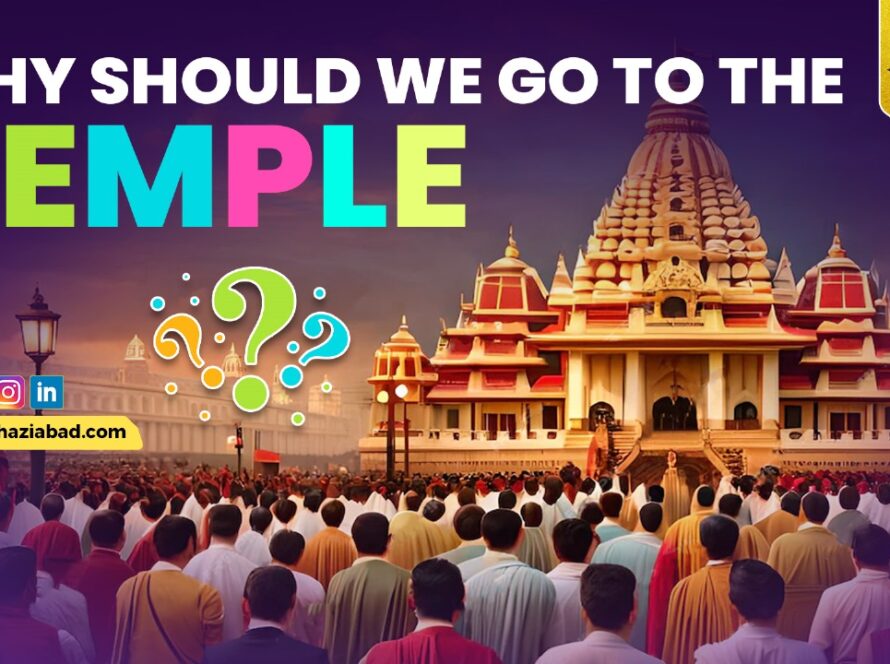Table of Contents
Each year, when homes and cities are decoreted with lamps in the Diwali festival, people in all over India celebrate Diwali festival for the homecoming of Lord Rama and the remembrance of Lord Rama’s return to Ayodhya after 14 years of exile and his victory over the demon king Ravana. Similiarly, this 22 January 2024 is going to become a historical day for the inauguration of the Ayodhya Ram Mandir, also known as Ram Janmabhoomi in Aodhya Dham. The long-cherished dream of building the Ayodhya Ram Mandir came true.
Ayodhya Ram Mandir
The Ayodhya Ram Mandir is a quite pretty and important temple to Lord Rama. It’s a special place for Sanatanies, as Ayodhya is the birthplace of Lord Rama.
Radha Krishna Temple Construction has Restarted. Ram Lalla temple is ready in Ayodhya, Help us to built a temple for Yashoda ka Lala
Donate Cement and Radha Naam Bricks and Get Immense Blessings From Sri Radha Krishna
“Whoever constructs or helps to construct a temple will protect eight generations of father, grandfathers and forefathers from falling into Hell” – Vamana Purana.
AVAIL TAX BENEFITS UNDER 80G ON THE DONATIONS MADE TO ISKCON
Ayodhya Ram Mandir Inauguration Date 2024
Ayodhya Ram Mandir inauguration date is on January 22, 2024, and Ayodhya Ram Mandir is currently taking online and offline bookings for ‘Aarti’ passes in anticipation of the official opening of the temple. According to the reports, the commencement of the inaugural ceremony is to begin on January 16, 2024.
Three distinct kinds of aarties will be held throughout the day, letting devotees to choose from the provided list and arrange their appointments accordingly.
The Big Event in 2024
Ayodhya Ram Mandir inauguration would be going to attended by many important people, religious leaders, and thousands of devotees. It would be a historic moment filled with joy and unity.
Ayodhya Ram Mandir Inauguration: Darshan And Aarti Timings
Darshan Timings:
Darshan timing would starts from 7:00 am to 11:30 am – 02:00 pm to 07:00 pm.
Shringar Aarti Timing:
The shringar aarti starts from 06:30 am.
One day before booking can be acceptable, based upon the availability.
Sandhaya Aarti Timing:
The sandhya aarti would starts from 07:30 pm.
Why is it Important?
Religious Significance: For Sanatanies, visiting the Ayodhya Ram Mandir is like Dham darshan. People find it brings them closer to Lord Ram and provides peace and happiness.
Cultural Heritage: The temple’s infrastructure is a mix of traditional Indian and modern techniques. It reflects the rich cultural heritage of Ayodhya and India as a whole.
Impact on Bharat
The temple has brought positive changes to Bharat. More tourists visit, developing more job opportunities and assisting the local economy. Ayodhya is now not just a historical city but also a cultural and unity hub that people from all walks of life visit. Ayodhya Ram Mandir is more than just a temple; it’s a symbol of faith, unity, and love to lord Rama.
Festival Celebration at Ayodhya Ram Mandir
- Ram Navami
- Dussehra
- Diwali
Places To Visit In Ayodhya
- Hanumangarhi
- Srichandrahari Temple
- Shri Nageshwarnath Temple
- Sitakup Tirtha
- Mattagajendra
- Naya Ghat
- Ram ki Paidi
- Raj Sadan
- Saptsagar Tirtha
- Devkali
Iskcon Ghaziabad distributes free meal to needy people everyday.
Join us by making a kind contribution to provide the prasadam to needy people.
Scriptures mention food (prasadam) distribution as one of the most charitable acts. Food (prasadam) distribution is a tradition that dates back to ancient times. Prasadam is infused with blessings. It not only nourishes the body but it energizes the soul one with unlimited blessings of Lord RadhaKrishna
Please donate generously and do not miss this unique opportunity to receive the unlimited blessings of Lord Krishna. Contribute to help us make this this occasion very special.
AVAIL 80G BENEFITS ON THE DONATIONS MADE TO ISKCON
Video Original Source: My Ashraya youtube channel
20 Facts about Ayodhya Ram Mandir
1. The Pure Foundation
Ayodhya Ram Mandir involves a spiritual significance. Including holy soil from 2587 regions, including popular places like Jhansi, Bithoori, Yamunotri, Haldighati, Chittorgarh, and the Golden Temple, each particle of soil contributes to the pureness of the temple, connecting diffrent regions in a divine unity.
2. Legacy of Sompuras
Ram Mandir’s Architects: Sompura Family
- Known for crafting over 100 temples globally.
- Contributed to Somnath Temple.
- Chief architect: Chandrakant Sompura, sons Ashish and Nikhil.
- Leaves a lasting legacy in temple architecture.
3. No Steel and Iron has been used
Ayodhya Ram Mandir, a significant departure from traditional construction methods, has been built by only stones, according to the general secretary of Shriram Janmabhoomi Teerth Kshetra Trust. This unique approach ensures the temple’s structural integrity for millennia, showcasing the strength of traditional methods.
4. Shri Ram Bricks
The Ram Mandir, a historical monument, features bricks with the sacred inscription ‘Shri Ram’, a nod to ancient practices used in Ram Setu construction. The modern bricks promise enhanced strength and durability, reflecting the ancient practice of buoyancy on water.
5. Integration of Shastras and Chaulukya Style
Ram Mandir, a Northern Indian temple, is designed in the Gujara-Chaulukya style, adhering to Vastu Shastra and Shilpa Shastra principles, blending ancient wisdom with aesthetic grace.
6. Soil from Thailand
Thailand sent soil for Ram Lalla’s consecration ceremony on January 22, 2024, demonstrating international spiritual camaraderie and transcending geographical boundaries, reinforcing Lord Ram’s legacy’s universal resonance.
7. Lord Rama’s Durbar
The Ram Mandir, spanning 2.7 acres, features three floors with a ground floor detailing Lord Ram’s life, including birth and childhood. The first floor showcases Lord Ram‘s Darbaar, a visual spectacle made from Bansi Paharpur, a pink sandstone from Rajasthan’s Bharatpur.
8. Numbers Unveiled
The Ram Mandir, spanning 360 feet in length and 235 feet in width, is a magnificent architectural marvel with a total height of 161 feet, including a peak, three floors, and 12 gates.
9. Contribution of Holy River Waters
The consecration ceremony on August 5th featured holy water from 150 Indian rivers, symbolizing a spiritual union and reflecting the diversity of India’s sacred waters, sourced from various rivers and locations.
10. Monetary Donations and High-Profile Support
The Ram Mandir, a significant religious and cultural landmark, has received substantial financial support from prominent figures like Chief Minister Adityanath Yogi, Deputy CM Keshav Prasad Maurya Bapu, and spiritual leader Morari Bapu.
11. A Time Capsule for Posterity
Lord Ram is a significant figure in the temple’s construction, as evidenced by the buried time capsule with a copper plate inscribed with important information about the temple, Lord Ram, and Ayodhya, aimed at preserving its identity for future generations.
12. Unresolved Survey on Mythological Temple
Archaeological surveys suggest the Babri Mosque was built on a pre-existing structure, with some suggesting it was from Lord Ram’s era, while others, like Sarvepalli Gopal, suggest Ayodhya’s human civilization dates back 2800 years, adding layers of mystery to the site’s historical narrative.
13. Exquisite Pillars and Nagar Style Design
The temple’s design incorporates 360 pillars crafted in the Nagar style, enhancing its visual appeal. The use of Bansi Paharpur and the Nagar style imparts a unique aesthetic to the structure, making it not just a place of worship but a masterpiece of architectural finesse.
14. Additional Funds for Revamping Temple Town
The temple, a masterpiece of architectural finesse, features 360 Nagar style pillars, a unique aesthetic influenced by Bansi Paharpur, enhancing its visual appeal and making it a place of worship.
15. Vision for the Future
The Shri Ram Janambhoomi Teerth Kshetra Trust reports that the construction of the Ayodhya Ram Mandir, set to open to devotees in January 2024, has reached 90% completion, serving as a testament to the past and guiding future spiritual and cultural aspirations.
16. Eco-friendly Construction
The temple’s construction prioritizes sustainability and minimizes environmental impact through the use of locally-sourced materials and energy-efficient design elements.
17. Unique Carvings
The temple features intricate carvings narrating Ramayana episodes and Lord Ram’s life, crafted by skilled artisans, adding an artistic and storytelling dimension to the architectural marvel.
18. Secular Participation
Ram Mandir, a cultural and spiritual temple, has been constructed with diverse religious participation, promoting unity and secularism, reflecting a collective effort to realize its significance.
19. Digital Documentation
Advanced digital documentation techniques like 3D mapping and virtual reality have been used to preserve the construction process and details of a temple, ensuring future generations can experience and study it.
20. Cultural and Educational Center
The Ram Mandir, a religious site, is also being developed as a cultural and educational center. It will house a museum showcasing artifacts related to Lord Ram and the Ramayana, as well as educational programs to promote Indian cultural heritage. The Ayodhya Ram Mandir is more than just a construction project; it represents the intersection of faith, history, and architectural excellence. It invites both believers and enthusiasts to explore its rich spiritual heritage.











